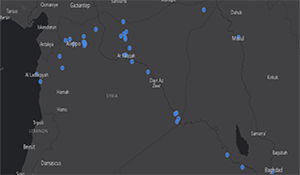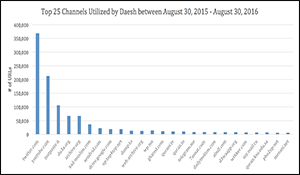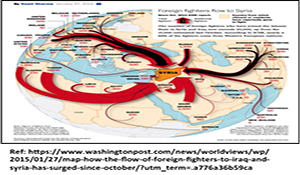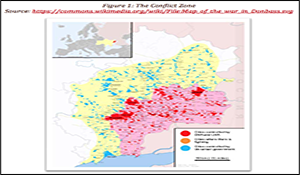
Iran and Saudi Arabia Influence
Question (R2 QL 11): What major economic, political and security (military) activities does KSA and Iran currently conduct in Bahrain, Lebanon, Iraq, Syria, and Yemen to gain influence? What are KSA and Iran’s ultimate goals behind these activities? What motivates KSA and Iran towards these goals? What future activities might KSA and Iran conduct in […]
Continue ReadingCommerce in the Strait of Hormuz
Question: What internal factors would influence Iran’s decision to interfere with the free flow of commerce in the Strait of Hormuz or the Bab el Mandeb? Author | Editor: Bragg, B. & Polansky (Pagano), S. (NSI, Inc). Iran’s Strategic Interests All of the SMEs either directly or indirectly referenced Iran’s strategic interests, and how these […]
Continue Reading
Da’esh Move to ZeroNet
Question (Follow-up QL3): The response to QL5 (see Appendix A) noted that ISIL is moving to ZeroNet platform for peer-to-peer messaging, which is extremely robust to distributed denial-of-service (DDOS) attack/other counter measures. What effect could this have on Intel efforts? Author | Editor: Robinson, S., Perez, E., Derrick, D. & Ligon, G. (University of Nebraska, […]
Continue ReadingEnsuring an Agile and Strong USG
Question (LR5): Given the generational nature of the threats we face, what changes in organization, legislation, authorities, resources, infrastructure, education, and other areas should the USG make to become as agile, resilient, survivable, sustainable, technologically and intellectually dominant as required to protect our constitutional system and prevail in any conflict from the present until 2050? […]
Continue Reading
Population Support for ISIL in Iraq
Question (QL3): What does primary source opinion research tell us about population support for ISIL in ISIL-held Iraq and globally outside the Combined Joint Operation Area (CJOA) (Syria and Iraq)? Author | Editor: Canna, S. (NSI, Inc). Opinion polls conducted by independent outfits in 2015 and 2016 derive the same result: the vast majority of […]
Continue Reading
Undermine ISIL’s “Virtual Caliphate”
Question (LR4): What is the strategic framework for undermining ISIL’s “Virtual Caliphate?” Author | Editor: Canna, S. (NSI, Inc). Iran’s Approach in Iraq Shifting to a Virtual Caliphate As ISIS loses ground in Syria and Iraq, the organization seems to be evolving to emphasize the information battlefront to both maintain and gain support from sympathetic […]
Continue Reading
Turkish Army Syrian Intervention
Question (QL2): What are the strategic and operational implications of the Turkish Army’s recent intervention in northern Syria for the coalition campaign plan to defeat ISIL? What is the impact of this intervention on the viability of coalition vetted indigenous ground forces, Syrian Defense Forces and Jabhat Fatah al-Sham (formerly ANF)? Author | Editor: Astorino-Coutois, […]
Continue Reading
Iran’s Post-ISIL Strategic Calculus
Question (LR2): What will be Iran’s strategic calculus regarding Iraq and the region post-ISIL? How will JCPOA impact the calculus? What opportunities exist for the US/Coalition to shape the environment favorable to our interests? Author | Editor: Astorino-Coutois, A. (NSI, Inc). Iran’s Approach in Iraq A number of the Iran SMEs who contributed to this […]
Continue Reading
Behavior Changes in Pakistan
Question (QL1): What are the factors that could potentially cause behavior changes in Pakistan and how can the US and coalition countries influence those factors? Author | Editor: Astorino-Coutois, A. (NSI, Inc). The experts who contributed to this Quick Look agree on an essential point: Pakistan’s beliefs regarding the threat posed by India are so […]
Continue Reading
The Conflict in the Donbas between Gray and Black
The Conflict in the Donbas between Gray and Black: The Importance of Perspective. Author | Editor: Finkel, E. (University of Maryland, START). The current case study analyzes the presence and importance of Gray Zone conflict dynamics and the employment of various instruments of power during the still ongoing conflict in Eastern Ukraine (Donbas) since its […]
Continue Reading